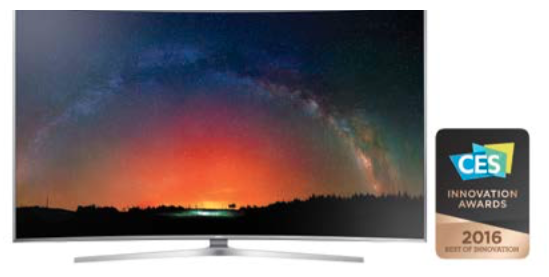In this second article about the accessibility and usability of mobile devices (smartphones and tablets) by persons who are blind and visually impaired, we exceptionally offer ourselves a distraction, a little drift, because we will be talking about an appliance, a piece of furniture and an object of companionship for most people. The majority of families own one and it is found in most homes: the television. You will wonder why we have decided to talk about this device. The answer lies mainly in the difficulty in using this medium - which has become a technological jewel - by visually impaired people since the latest generation of televisions are particularly complicated to use for the myriad of things that they can do and for the high number of services we can enjoy, if we can use them.
Televisions currently available in the electronics market have evolved to the point of becoming highly technological devices allowing users to access information as well as multimedia content from various sources. Some offline content is available in mass storage such as hard disks or pen drives or even from devices connected to our home network. Online content (streaming) is also available from the network of networks, the Internet, which offers YouTube or paid subscriptions streaming sites such as Netflix for films and television series, sporting events, etc., either live or on demand by users themselves. Not to mention the immense world of movies of every genre that so many users produce themselves without necessarily having to deal with editors or producers. So, televisions have changed over time from passive program broadcasters of conventional television networks to true active multimedia centres with which users can interact to enjoy, at will, the ultimate multimedia experience. On these multimedia centres we can surf the Internet, check our emails, play, etc. Let us have a look at the technological aspects related to accessibility and usability by blind and visually impaired people. The article written in the previous issue of the magazine about operating systems has here some relevance. In fact, some TV manufacturers have decided to equip their own models with the Android operating system.

But first things first: in 2014, the famous Korean giant Samsung Electronics was the first to implement in their television sets accessibility features, albeit partially, to facilitate access by blind and visually impaired persons. In fact, they introduced screen reading through voice synthesis as well as print enlargement features on videos. On these devices, blind users can easily access information through what is called EPG (electronic programs guide). In essence, speech synthesis automatically reads the channel we are currently viewing, all information relating to the program being broadcast and those that will next be broadcast. This information is the following: a brief description of the program, the synopsis, the director, the main protagonists, etc. It is also possible to configure independently some more options relating to content use by blind and visually impaired people such as the activation or deactivation of audio description. The blind person cannot independently configure other options such as searching and storing TV channels; and it is also not possible to choose the multimedia content from the other sources mentioned above.
So, we can say that, even though Samsung has taken a step in the right direction with regards to accessibility with its TV models produced in 2014 (marked with the letter "h" in the model code), it has not, so to speak, really crossed the river! The river was brilliantly crossed, however, as far as we know, with the TVs produced in 2015 (marked with the letter "j" in the model number). For this last generation of televisions, Samsung has integrated fully accessible features, options and configuration menus. Since these devices substantially resemble real computers, as mentioned above, just like computers, they are fitted with an actual operating system. In Samsung's case, the proprietary system is called Hub and Tizen. It is possible to install third-party apps to meet the various requirements for the use of these devices. Of course, the accessibility and usability of third-party apps are not assured. Indeed, as far as we know, third-party apps, in this case, are totally inaccessible, not because the tools to make them so are lacking, but because developers typically ignore accessibility issues and therefore do not follow the design for all philosophy (universal design).
Of course, should we say fortunately, other manufacturers have not remained behind. In the category of affordable televisions builders, we can mention other electronics giants such as Sony, Sharp, Philips and LG. When building their TVs, these brands used software-wise a modified version of the operating system designed by the well-known Mountain View service provider, Google. We are referring to the Android operating system of which a special version was developed and is simply called, Android TV. And since accessibility features are already integrated in the operating system, on these television sets, these features have been replicated and implemented with the result that these devices now have a real screen reader called Talkback, as well as advanced features for enlarging screen font, useful to people with low vision. On these TVs, it is possible to enjoy an accessibility experience almost comparable to what is found on Android tablets and smartphones. So, this means that not only apps and system functions are accessible, but also many third-party apps such as audio-video players like VLC. At the end of this brief overview, we can conclude that for people living with vision loss who wish to enjoy television in the traditional way, we recommend the purchase of a Samsung television of the "j" series. To users wishing instead to use other capabilities and features implemented in these systems, we recommend the purchase of a television equipped with the Android TV operating system because of the characteristics related to the increased accessibility of alternative apps developed by third parties. The TV models in which accessibility features have been implemented are mid-high-end models, not actually cheap and of not exactly modest sizes: in fact, we are talking about devices with screens starting from 40 inches up. Finally, to our knowledge, the models and television brands with the Android operating system that seem to ensure greater and better reliability are Sony's Bravia series products.
I wish to express my thanks and my gratitude to Mr. Alessio Lenzi who has contributed to this article with his experience, expertise and knowledge.





.png)